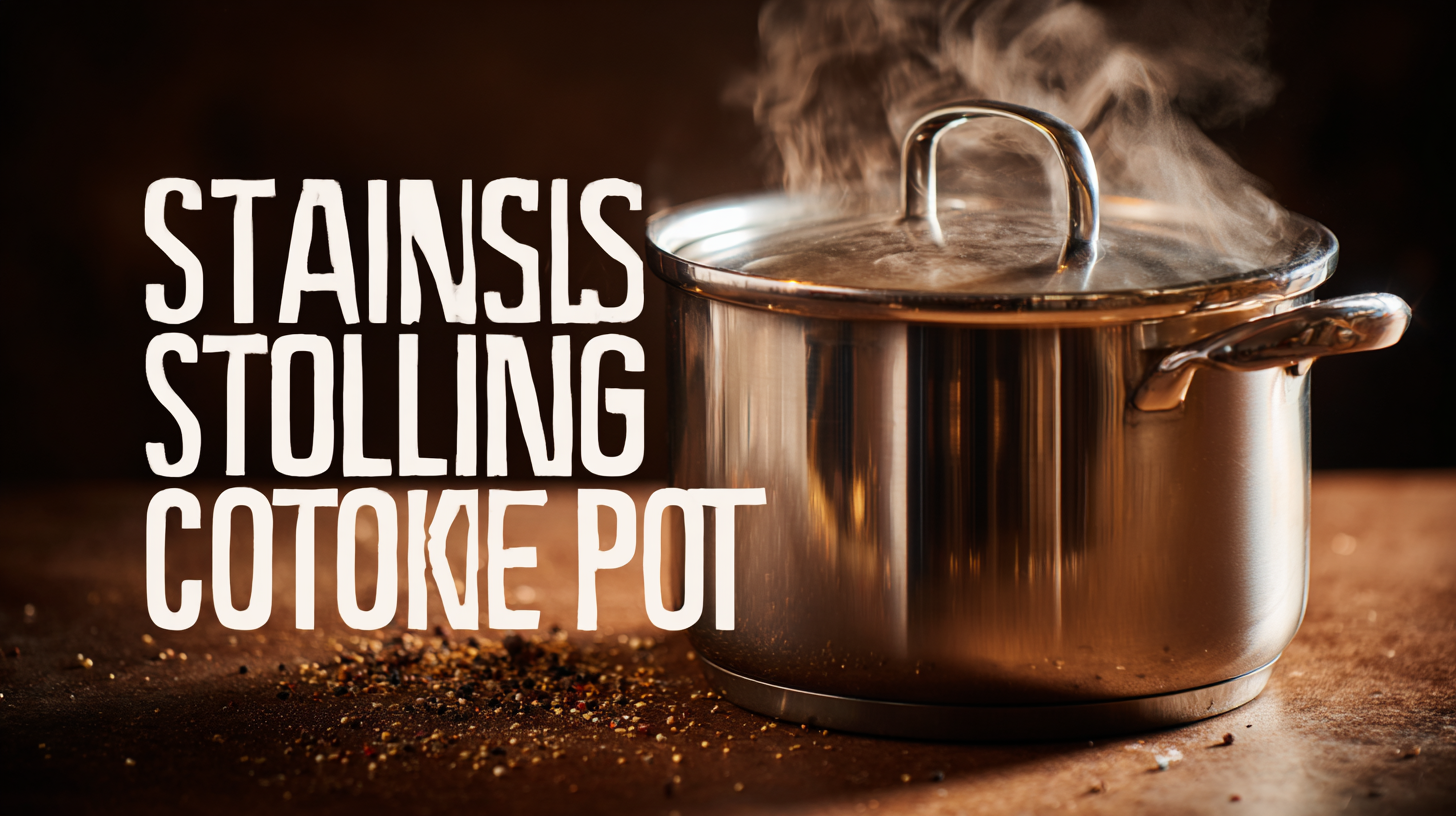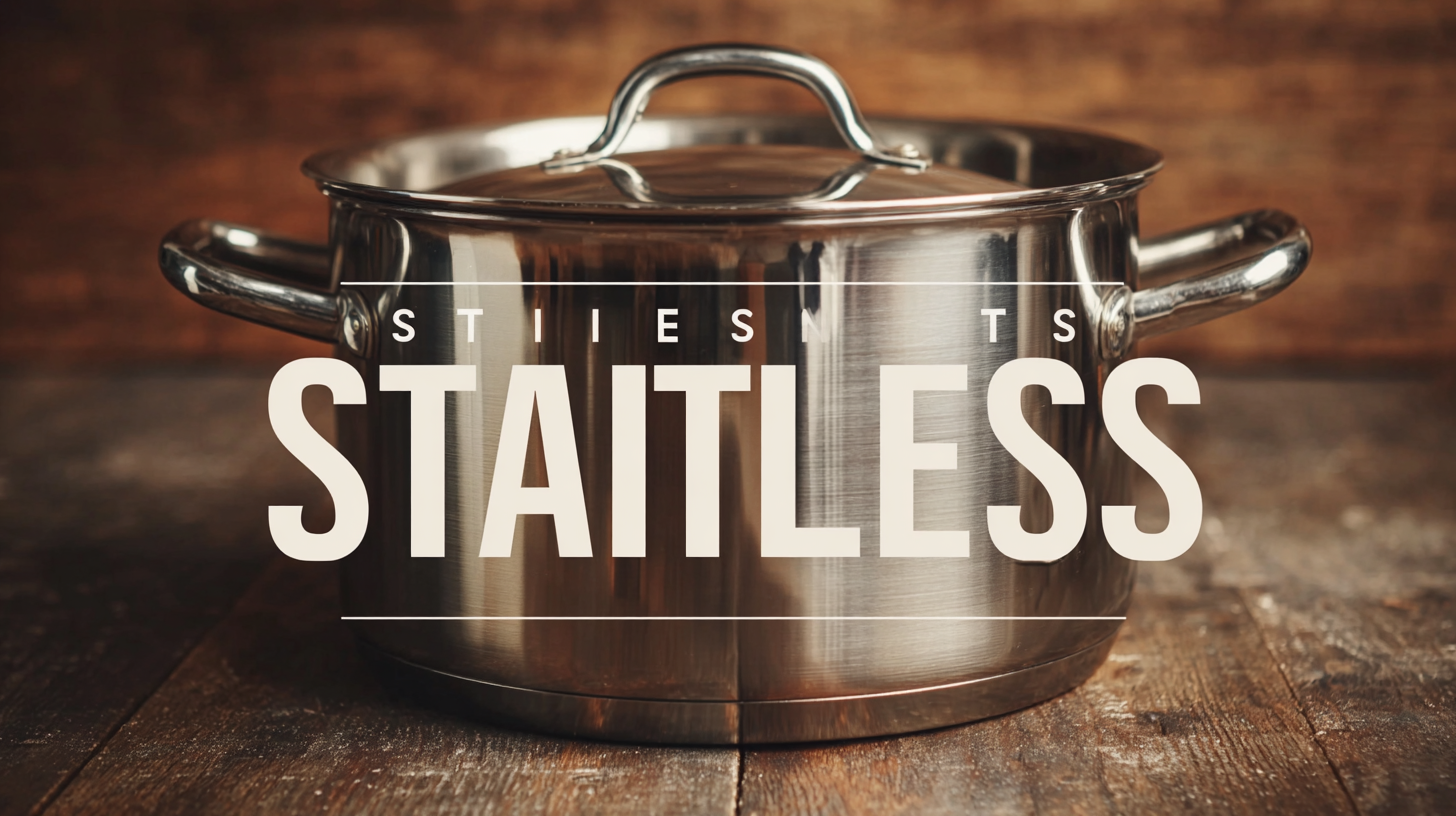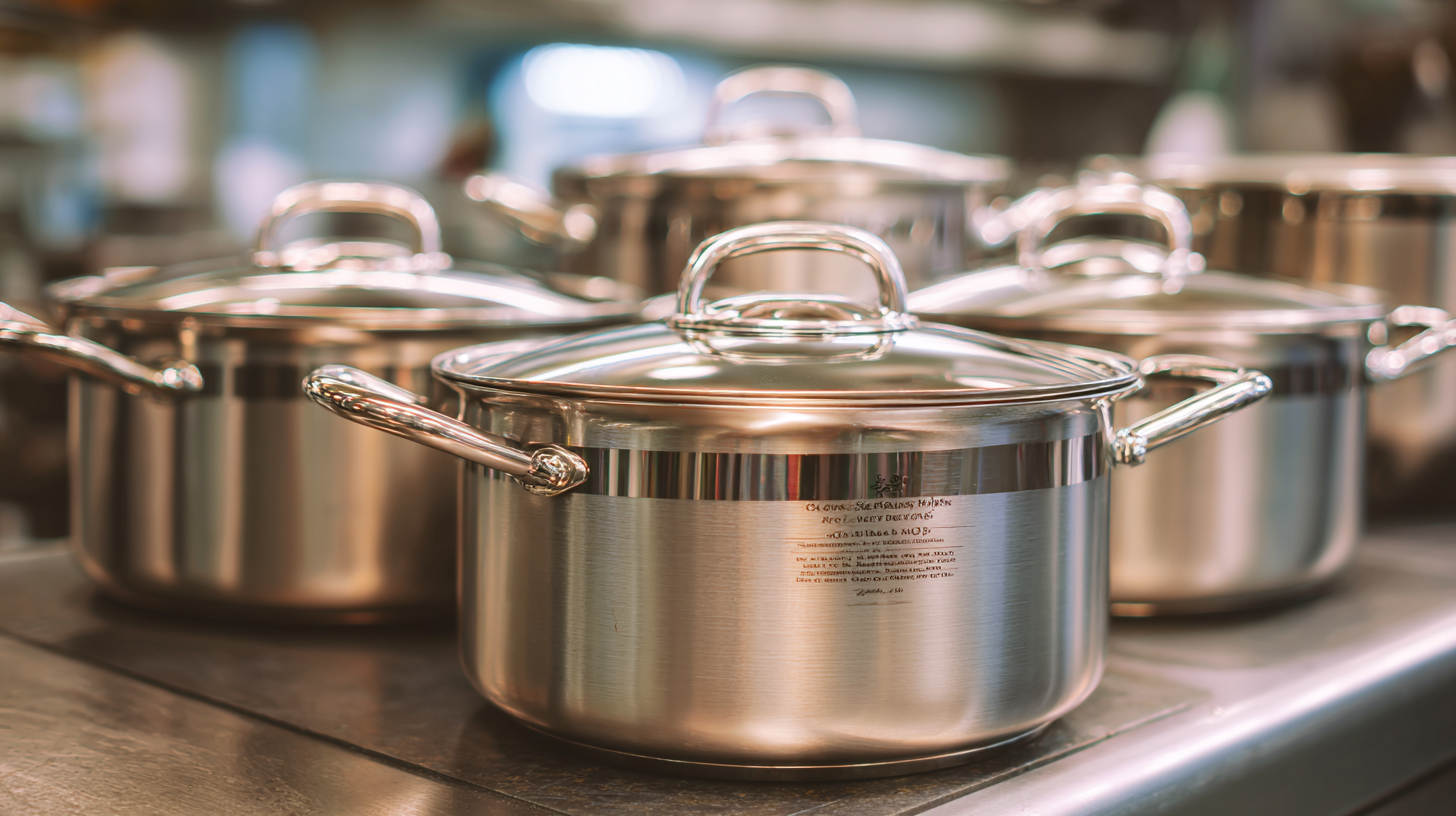When it comes to outfitting your global kitchen, selecting the right cookware is crucial, and one essential item is the Stainless Steel Cooking Pot. According to a recent industry report by Grand View Research, the global cookware market is expected to reach $26.92 billion by 2025, with stainless steel products being a significant contributor due to their durability and versatility. Stainless steel cooking pots are favored by both home cooks and professional chefs alike, thanks to their ability to retain heat, resist staining, and provide an even cooking surface. This blog will guide you through the key factors to consider when choosing the best stainless steel cooking pot to meet your diverse culinary needs, ensuring that you invest in quality cookware that enhances your cooking experience and stands the test of time.

When it comes to equipping a global kitchen, understanding the different types of stainless steel cooking pots is crucial for uplifting culinary experiences. Stainless steel, known for its durability and resistance to rust and corrosion, comes in various grades, the most common being 18/8 and 18/10, indicating the percentage of chromium and nickel present. According to a recent report from the Foodservice Equipment Reports, cookware made from 18/10 stainless steel retains heat well and is less prone to warping, making it an excellent choice for both home cooks and professional chefs.
Furthermore, the design and construction of stainless steel pots play a significant role in cooking performance. Tri-ply and multi-ply options, which sandwich a layer of aluminum between layers of stainless steel, provide superior heat distribution and prevent hot spots, enabling more precise cooking. A market analysis by Grand View Research highlights that the demand for high-quality cookware is rising, with stainless steel cooking pots projected to grow at a CAGR of 5.2% from 2021 to 2028, as consumers increasingly prioritize longevity and performance in their kitchen tools. By selecting the right type of stainless steel pot, culinary enthusiasts can enhance their cooking skills while ensuring their kitchen tools stand up to the test of time.

When selecting the best stainless steel cooking pot for your kitchen, it's essential to consider several key features that will enhance your cooking experience. First and foremost, look for a heavy-gauge stainless steel pot that ensures durability and even heat distribution. This characteristic helps prevent hot spots and ensures your food cooks uniformly, essential for preparing delicious meals.
Another critical feature to evaluate is the pot's compatibility with various heat sources. Ensure that the pot is suitable for induction, gas, and electric stoves, providing versatility in your cooking environment. Additionally, consider the design of the handles; they should be ergonomically designed and heat-resistant for safe handling. A well-designed lid that fits snugly is also crucial, as it aids in moisture retention, leading to more flavorful dishes.
Lastly, pay attention to the pot's capacity and shape. Depending on your cooking style, you may require larger pots for family meals or smaller ones for quick dishes. Assessing the shape will also help in facilitating easy stirring and mixing, ensuring that you can enjoy the cooking process without hassle. By focusing on these essential features, you can choose a stainless steel cooking pot that meets all your culinary needs.
This bar chart represents the comparison of key features to consider when choosing a stainless steel cooking pot for your kitchen. Each feature is rated on a scale from 1 to 10, providing a visual understanding of their importance and performance.
When it comes to selecting the best stainless steel cooking pots for your global kitchen, understanding the material grades and their impact on quality and performance is essential. The grade of stainless steel used in cookware significantly affects its durability, heat distribution, and resistance to rust and corrosion. Higher grades, such as 18/10 stainless steel, consist of 18% chromium and 10% nickel, providing superior performance and longevity compared to lower grades. The choice of material not only influences cooking effectiveness but also impacts the ease of maintenance and cleaning.
Moreover, the growing popularity of non-stick cookware has also prompted consumers to weigh the benefits of different coatings and their associated qualities. Recent evaluations highlight that while some brands claim exceptional non-stick and scratch resistance, performance can vary widely across different options. Therefore, when considering pots and pans for your kitchen, scrutinizing the material grade and performance metrics becomes critical. Investing in high-quality stainless steel cookware ensures you can rely on its functionality for diverse cooking needs while providing an excellent culinary experience.
| Material Grade | Corrosion Resistance | Durability | Heat Conductivity | Weight | Best Use Case |
|---|---|---|---|---|---|
| 304 Stainless Steel | Excellent | Very High | Good | Medium | General Cooking |
| 316 Stainless Steel | Excellent | Exceptional | Very Good | Heavy | Marine and Chemical Use |
| 430 Stainless Steel | Fair | Moderate | Fair | Light | Affordable Cookware |
| 201 Stainless Steel | Moderate | Good | Poor | Light | Economical Cooking |
When it comes to maintaining your stainless steel cookware, proper care is essential for ensuring longevity and optimal performance. One of the key practices is to avoid using high heat settings. Stainless steel is known for its durability and heat resistance, but excessive heat can warp the surface and discolor the pot. Instead, opt for medium heat and allow the pot to preheat slowly, which not only protects the cookware but also enhances cooking results.
Another crucial aspect of maintenance is cleaning. After each use, let your stainless steel pot cool down and soak in warm, soapy water to loosen food residues. For stubborn stains, a mixture of baking soda and water works wonders as a gentle abrasive. Avoid harsh chemicals and steel wool, as these can scratch the surface. Instead, use a soft sponge or cloth for cleaning to keep your pots looking new. Regularly polishing your pots with a stainless steel cleaner can also help restore their shine and prevent fingerprints from appearing.

When it comes to choosing the right stainless steel cooking pot for your global kitchen, size and shape play crucial roles in optimizing functionality. The ideal pot should not only accommodate your culinary needs but also fit seamlessly into your space—be it a large kitchen island or a compact galley setup. Consider the various cooking techniques you employ, from boiling to sautéing, and select a pot size that complements these methods. A versatile medium-sized pot might be perfect for daily meals, while larger pots can help you prepare dishes for family gatherings or special occasions.
In addition to size, the shape of the pot can significantly impact your cooking efficiency. A deeper pot is excellent for stews and soups, whereas a wider, shallower pot facilitates sautéing and browning. Think about the types of dishes you often prepare, as well as the layout of your cooking space, including the accessibility of your kitchen island. A thoughtfully chosen pot, tailored to your cooking style and kitchen environment, will not only enhance your culinary experience but also elevate the overall aesthetic of your kitchen, making it a central hub for inspiration and creativity.






